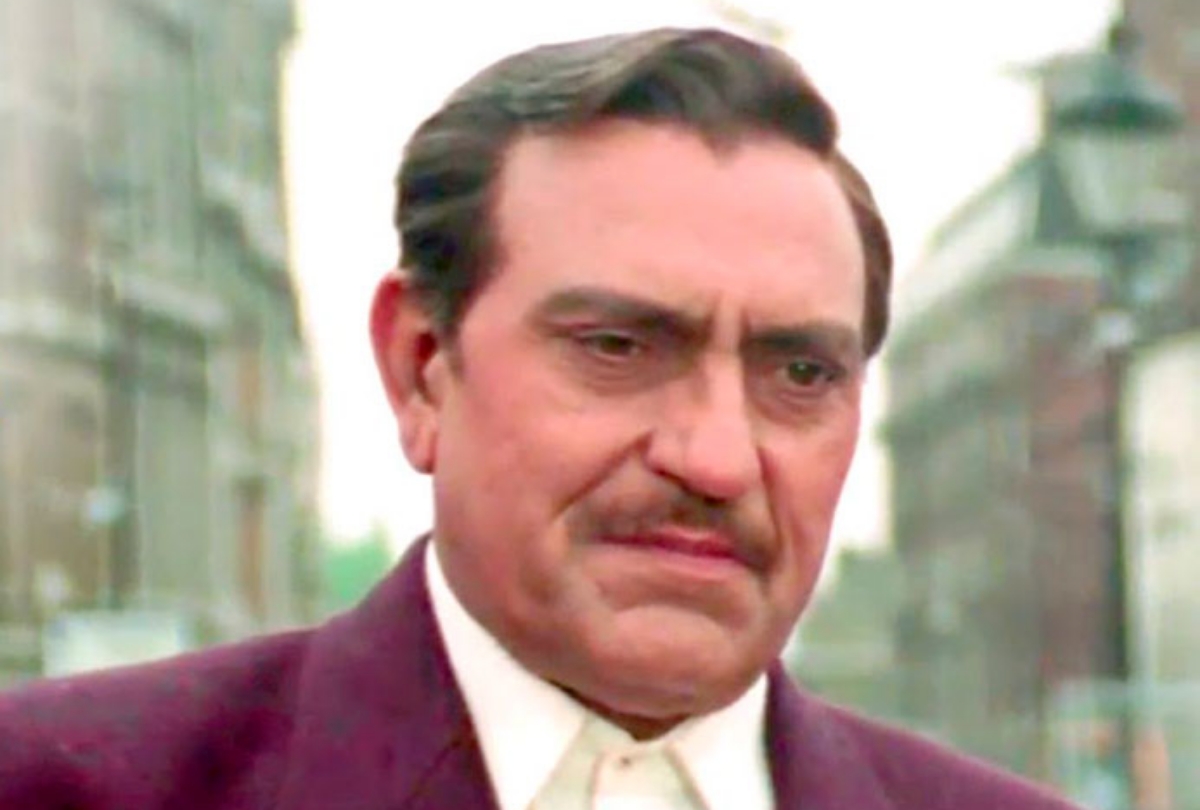Some Amazing Lesser Known Fun Trivia Facts About Amrish Puri

Amrish Lal Puri was an iconic and well known Indian Actor. He was famously known by MOGAMBO role in the movie Mr.India (1987) of Shekhar Kapur’s the last collaboration between writers Javed Akhtar and Salim Khan — gave Puri a new identity, ‘Mogambo,’ Puri’s catchphrase in Mr. India, Permanent place was made by “Mogambo khush Hua,” in Indian film history. The most popular and know of Hindi movie’s most iconic villain eventually boils down to two names- Gabbar Singh from Sholay (1975) and Mogambo from Mr. India. He was also best known as Mola Ram in Steven Spielberg’s Hollywood film Indiana Jones and the Temple of Doom (1984), which made people cringe in fear with his terrifying role as a Kali-worshipping bald Tantrik (priest). He was born on 22 June 1932 at Nawanshahr, Punjab, and had four siblings elder sister Chandrakanta, younger brother, Harish Puri elder brothers Chaman Puri and Madan Puri (both of them were also actors). Puri was also a first cousin of singer and actor Kundan Lal Saigal. Until his death in 2005, Amrish Lal Puri also featured in positive supporting roles in many movies, and he won three Film fare Awards for Best Supporting Actor. For his villainous role, his bald look gives him more flexibility to experiment with different looks as a villain in subsequent movies.
Early life and career
Amrish Lal Puri first came to Bombay in the 1950s with his brothers Madan Puri and Chaman Puri, who were already established and famous actors known for playing villainous roles. In his first attempt, he failed his screen test and was not selected. Instead, he found a job in the State Insurance Corporation Ministry of Labour and Employment. During his job, he also started performing at Prithvi Theater in plays written by Satyadev Dubey; through his spell in theater creations, Puri had the advantage of working with striking writers, including Satyadev Dubey. After performing there, he became a well-known stage actor and won the Sangeet Natak Academy Award in 1979 barely. After eight years, he made his debut in Hindi films. Actor and director Sunil Dutt’s Reshma Aur Shera denoted Puri’s introduction in Hindi film. However, his job wasn’t viewed as critical enough to set him up. After this, Amrish Lal Puri was very successful in many religious Films as he worked in many films like Hindi, Canada, Marathi, Hollywood, Punjabi, Malayalam, Telugu, and Tamil. Shyam Benegal noticed Puri and cast him as a feudal landlord in Nishant, in a 1975 film that featured a talented star cast of actors like Smita Patil Girish Karnad and Shabana Azmi, all of whom went on to great careers themselves. Unlike many of his time actors, Amrish Lal Puri journey into the film industry only in his early forties but had a long and versatile career in both Bollywood and theater. Puri was noticed when his movie gets super hit HAM PANCH in 1980, in which he played the main villain role.
After getting a super hit movie, he was getting cast as the main villain in other movies. He worked with arthouse favorites like Govind Nihalani and Benegal to mainstream names like Ramesh Sippy. He gets next super hit movie in 1982 after playing the main villain role in the movie VIDHAATA and in the same year he again played the main villain role in the movie SHAKTI co-starring Dilip Kumar and Amitabh Bachan, Bollywood’s top scoundrel sparkled similarly also in Chachi 420 with his comic turn in entertainer chief Kamal Hassan’s 1997 achievement. Puri mostly featured in subsequent Ghai Flims.
Bollywood career
In the Bollywood film, there were hardly any in which Puri was not featured as a villain. His baritone voice and dominating screen presence made him stand amongst the other villains of the day. For the international audiences, Amrish Lal Puri was known as his role Khan in RICHARD ATTENBOROUGH’s GANDHI (1982). In Attenborough’s historical drama, Puri played the tremendous character of Mir Alam Khan, known to have assaulted Gandhi in South Africa. He created such an impression that he can keep his head-shaped. Beside this villain role, there was some such positive role in movies like DILWALE DULHANIA LE JAYENGE, PHOOL OR KATE, Gardish, Virasat, Ghatak, Pardesh, Mujhe Kucch Kehna Hai, Mohabbatein and China Gate. Among these movies, Puri gets the best-supporting actor award for MERI JANG, and VIRASAThe accomplished this in the very year in which he played another critical miscreant, Durjan Singh, in Rakesh Roshan’s Karan Arjun. Amrish Lal Puri acted in more than 450 films between 1967 and 2005 and was one of the most successful villains in Bollywood. Most of them were his hit movies. His last film, “The Warrior Poet” (2005) of Subhash Ghai’s Kisna. By the end of his career, he acted in more than 220 Hindi movies, while his general credits ran more than 400. His inheritance wasn’t only his baritone or the wide range of characters he played, and it was the gravitas that he brought to even minor characters, enlisting his quality in an industry that is characterized by stars and heroes. He brought his “character actor” from beneath the shadow of the hero, with a dignity that was his trademark.
Later life
In June 2019, Amrish Lal Puri was honored with Google Doodle. On his 87th Birthday, Google created his picture and accompanying a text read as If at first, you don’t succeed, try again, and you may wind up like Indian film entertainer Amrish Puri. He defeated an early difficulty while in transit to satisfying his big-screen dreams,” and it was a big honor for Amrish Lal Puri. On 12 January 2005, Amrish Puri died as he experienced the myelodysplastic disorder, an uncommon sort of blood disease, and had gone through a cerebrum medical procedure for his condition after he was admitted to the Hinduja emergency clinic on 27 December 2004. His condition was so critical that he was required a successful evacuation of the blood aggregated in the cerebral area of the mind. After some time, he slipped into a state of insensibility quickly before his passing. His burial service was on 13 January 2005 at Shivaji Park crematorium, and His body was brought to his home for individuals to offer their final appreciation.



